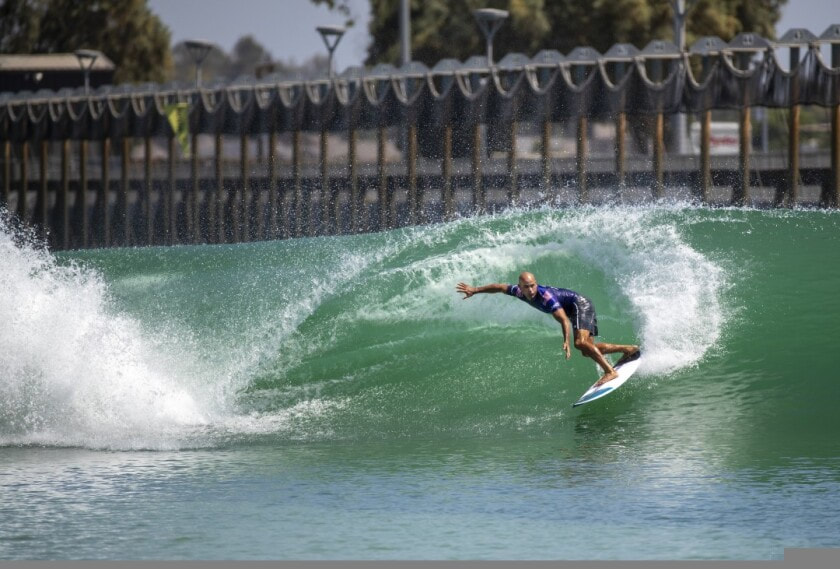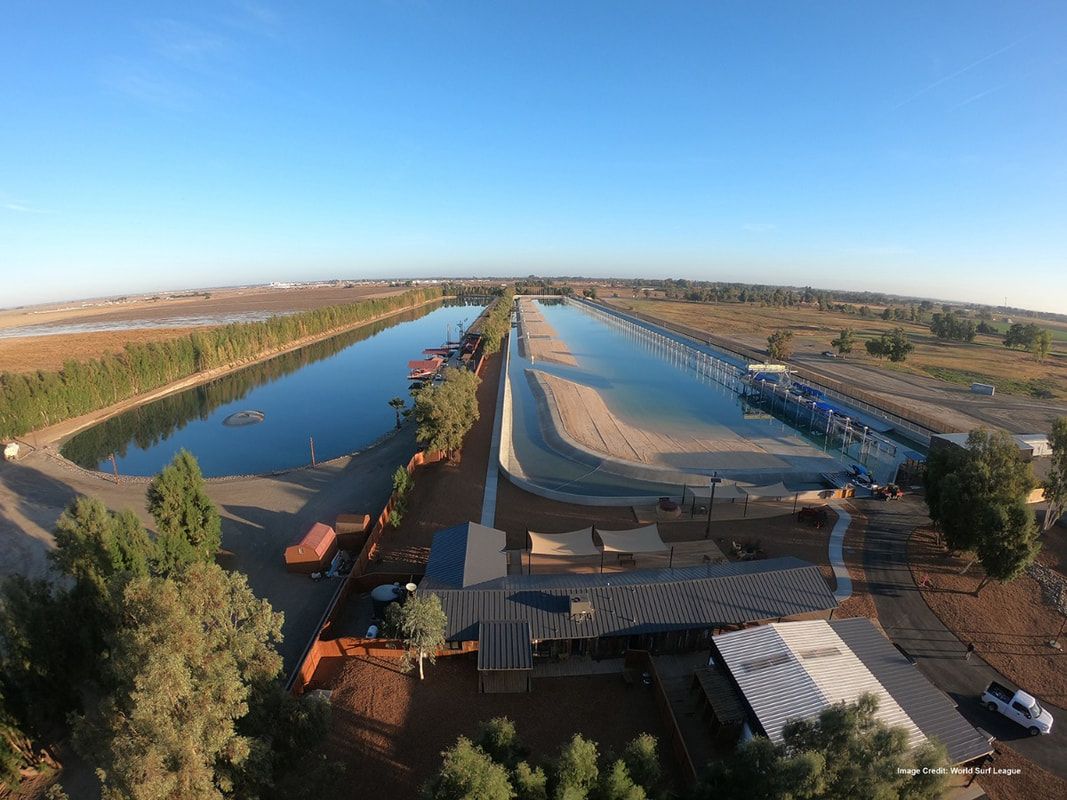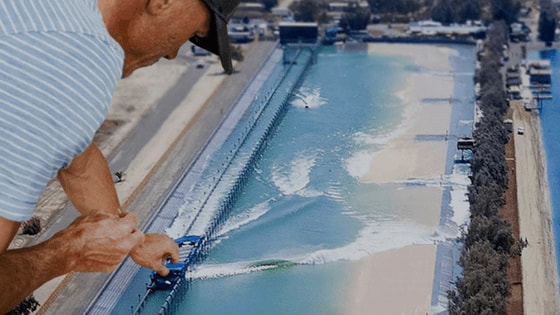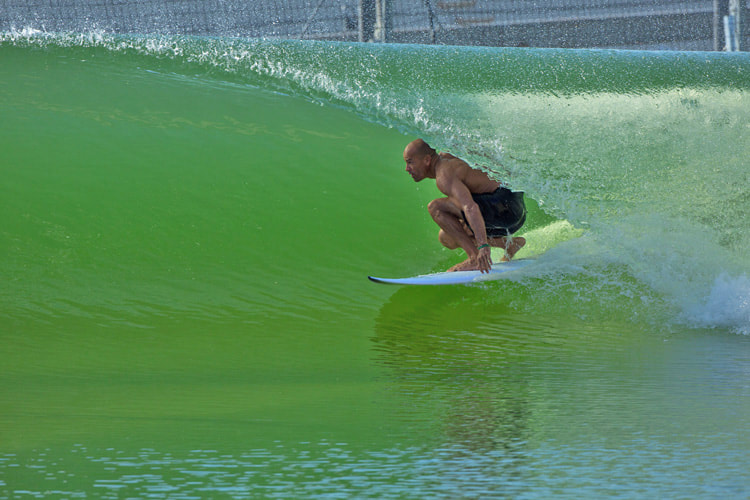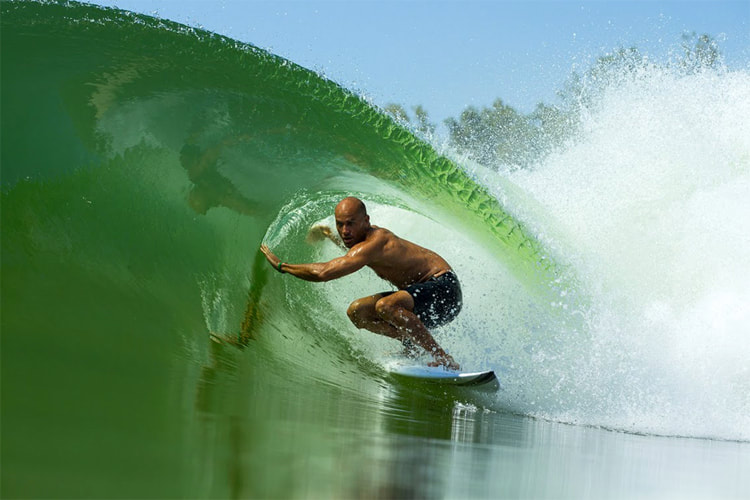|
In the 1966 classic film The Endless Summer, documentary filmmaker Bruce Brown follows surfers Michael Hynson and Robert August on an around-the-world surfing adventure to find the perfect wave. Since then, surfers of all calibers have made this a life goal. Many have scoured the islands of Hawaii, trekked the beaches of South Africa, Thailand, and England all in search of the perfect wave. And just like in the movie (spoiler alert) even the best scientific tracking tools can’t guarantee that those waves will be there or perform as they hope. But there was one place they didn’t look. And that was inland. You read that correctly. Not island, but inland. Like 110 miles inland from the closest beach.
(Fun Fact: I surfed with Kelly when he was a kid. Although he was six years my junior, his style caught my attention enough to paddle next to him and strike up a conversation. We'd battle it out, wave after wave, for the rest of the day. He was highly competitive then, but super easy going.) Like so many before him, Slater has been dreaming about this wave since surfing in an artificial wave pool in Texas when he was 14 years old. In 2015, that dream became a reality, when he shocked the world with an Instagram video of him ridding a perfectly crafted wave in the middle of nowhere. Now let me paint the picture for you. Nestled between Los Angeles and San Francisco is about 250 miles (north to south) of farmland. Beginning at the Pacific Ocean, this land stretches eastward for what I’d guess to be 200 miles until it hits the Sierra mountains. Roughly 2/3 of the nation’s food supply is grown on this piece of California. From strawberries and grapes to kale and broccoli, or pistachios and almonds to poultry and beef, if it’s in your refrigerator there’s a good chance it came from here. What’s not farmed is mined for oil and other natural resources. The terrain is green, and dusty, and mountainous, and rugged, and hilly, and windy. The area is so enormous that the three major highways that cut through it barely show up on satellite photos.
Per the internet, I learned the testing site is about 2,000 feet long and 500 feet wide. While the original artificial lake was built for water skiing, Slater saw its potential and turned it into a premier site for surfing man-made waves. Because of its location in the middle Central California, the Surf Ranch is able to operate year-round “and can be surfed at any time thanks to the unique supercomputers that output ocean-like waves regardless of weather and wind conditions.” At the time, the pool created barrel waves that lasted for 45 seconds. As far as the public knows, the Surf Ranch produces 15 waves per hour, meaning that any surfer who visits could expect to catch around 120 waves in a day if they hit every wave. As one of my childhood surfing idols, Gerry Lopez, describes it, “Kelly has created the quintessential perfect wave. And to be able to get that over and over again is really going to push the envelope of surfing like it’s never been pushed before.”
It’s the ultimate “build it and they will come” mentality brought to life. While the Surf Ranch is a bucket-list surf destination for any surfer, it’s only for a select group of people – those who are lucky enough to be invited, and those rich enough to ride it. On the upside, you get a single, long ride that can last up to 45 seconds without anyone cutting you off. Although that is a priceless offer, what I found online suggests even a single wave at the Surf Ranch is way out of my budget. One writer calculated, “The costs depend on the deal that you choose, though you're typically looking in the ballpark of $10,000 for the "Surf Ranch Experience." This number includes the premium tier experience and a booking fee. Every wave cost around $450 on average, according to various sources.” If I had money to burn, I’d burn it here. Surf by day, eat farm to table cuisine at night. Rumor has it, you can book the entire wave pool facility out for the day, which depending on the season, could set you back somewhere between $35,000 to $50,000. “Breaking down the cost even further, you are looking at spending anywhere from $290 to $415 per wave.” With gas prices the way they are right now, hitting the beach on a constant basis is too expensive for me. So, it’s back on the couch with my Bruce Brown collection of surf DVD’s - a gift given to me by an old and very dear friend Pat Carroll who has never surfed a day in his life but has the most beautiful long board hanging on his wall. A board that looks like it was made for an Endless Summer.
0 Comments
Leave a Reply. |
Ian MacdonaldAn ex-copywriter turned punk rock pastor and peacemaker who dedicates his life to making the world a better place for all humanity. "that they all might be one" ~John 17:21“Prius vita quam doctrina.”
~ St. Thomas Aquinas (1225–1274) * “Life is more important than doctrine.”
Archives
June 2024
|

